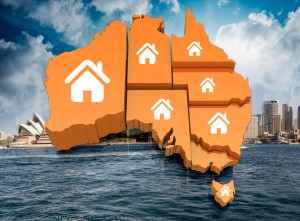The national residential rental vacancy rate decreased in January 2020 to 2.1% from 2.5% recorded in December, with the total number of vacancies Australia-wide now at 72,422 vacant residential properties. 
All states recorded decreases in vacancy rates with Darwin recording the highest vacancy rate at 3.2% followed by Sydney at 3.1%.
Hobart’s vacancy rate remains steady at 0.6%, the lowest of all capital cities.
Adelaide and Canberra also recorded low vacancy rates of 1.0% and 1.4% respectively.
The year on year comparison revealed a more moderate decline.
The national rental vacancy rate back in January 2019 was 2.2% compared to 2.1% recorded for January 2020. Melbourne, Canberra and Hobart recorded higher vacancy rates compared to this time last year.
Key Points
- National residential rental vacancy rate decreased marginally in January 2020 to 1% from 2.5% recorded in December, with the total number of vacancies Australia-wide now at 72,422 vacant residential properties.
- All states recorded marginal decreases in vacancy rates with Darwin recording the highest vacancy rate at 2% followed by Sydney at 3.1%. Hobart’s vacancy rate remains steady at 0.6%, the lowest of all capital cities.
- Over the month, Capital city asking rents increased 5% for houses and 1.1% for units for the week ending 12 February 2020 to record asking rents of $569 per week for houses and $442 per week for units.
| City | Jan-19 Vacancies |
Jan-19 Vacancy Rate |
Dec-19 Vacancies |
Dec-19 Vacancy Rate |
Jan-20 Vacancies |
Jan-20 Vacancy Rate |
| Sydney | 22,426 | 3.2% | 26,415 | 3.6% | 22,707 | 3.1% |
| Melbourne | 10,564 | 1.9% | 14,597 | 2.5% | 12,229 | 2.1% |
| Brisbane | 8,911 | 2.7% | 9,931 | 2.9% | 8,334 | 2.4% |
| Perth | 6,121 | 3.0% | 5,228 | 2.5% | 4,337 | 2.1% |
| Adelaide | 2,141 | 1.1% | 2,203 | 1.1% | 1,929 | 1.0% |
| Canberra | 594 | 0.9% | 1,112 | 1.7% | 947 | 1.4% |
| Darwin | 1,193 | 3.8% | 1,117 | 3.5% | 1,028 | 3.2% |
| Hobart | 144 | 0.5% | 197 | 0.6% | 182 | 0.6% |
| National | 72,557 | 2.2% | 84,591 | 2.5% | 72,422 | 2.1% |
SQM’s calculations of vacancies are based on online rental listings that have been advertised for three weeks or more compared to the total number of established rental properties.
SQM considers this to be a superior methodology compared to using a potentially incomplete sample of agency surveys or merely relying on raw online listings advertised.
Please go to our Methodology page for more information on how SQM’s vacancies are compiled.
Following on from December, January’s vacancy rates are also affected by seasonality.
We will have a clear picture of the rental market when the numbers for February are released.
However, we do believe that rental vacancy rates have now peaked in Sydney, Brisbane, Perth and Darwin.
And assuming a stable economy, these cities are likely to record gradually lower vacancy rates as 2020 progresses.
Asking Rents
Over the month, Capital city asking rents increased 2.5% for houses and 1.1% for units for the week ending 12 February 2020 to record asking rents of $569 per week for houses and $442 per week for units. 
In comparison over the 12 months, asking rents increased 1.6% for houses and remained steady for units.
Sydney, Melbourne and Perth all recorded increases in asking rents for both houses and units over the month.
Darwin and Hobart recorded decreases in both house and unit asking rents.
Darwin had a 2.9% decline for houses and 2.5% for units whilst Hobart recorded 2.5% decline in houses and 1.4% in unit asking rents.
Brisbane recorded a decrease in house asking rents of 0.4% but increases of 0.2% in unit rents.
Canberra and Adelaide had a reverse trend of increases in house rents but decrease in unit rents.
from Property UpdateProperty Update https://propertyupdate.com.au/national-rental-vacancy-rates-tumble-in-january/


No comments:
Post a Comment